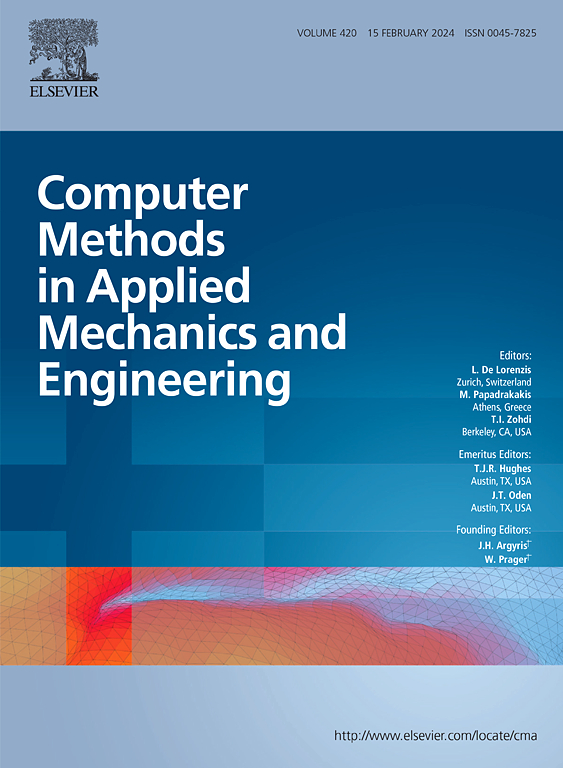Teaching artificial intelligence to perform rapid, resolution-invariant grain growth modeling via Fourier Neural Operator
IF 6.9
1区 工程技术
Q1 ENGINEERING, MULTIDISCIPLINARY
Computer Methods in Applied Mechanics and Engineering
Pub Date : 2025-03-27
DOI:10.1016/j.cma.2025.117945
引用次数: 0
Abstract
Microstructural evolution, particularly grain growth, plays a critical role in shaping the physical, optical, and electronic properties of materials. Traditional phase-field modeling accurately simulates these phenomena but is computationally intensive, especially for large systems and fine spatial resolutions. While machine learning approaches have been employed to accelerate simulations, they often struggle with resolution dependence and generalization across different grain scales. This study introduces a novel approach utilizing Fourier Neural Operator (FNO) to achieve resolution-invariant modeling of microstructure evolution in multi-grain systems. FNO operates in the Fourier space and can inherently handle varying resolutions by learning mappings between function spaces. By integrating FNO with the phase-field method, we developed a surrogate model that significantly reduces computational costs while maintaining high accuracy across different spatial scales. We generated a comprehensive dataset from phase-field simulations using the Fan–Chen model, capturing grain evolution over time. Data preparation involved creating input–output pairs with a time shift, allowing the model to predict future microstructures based on current and past states. The FNO-based neural network was trained using sequences of microstructures and demonstrated remarkable accuracy in predicting long-term evolution, even for unseen configurations and higher-resolution grids not encountered during training.
求助全文
约1分钟内获得全文
求助全文
来源期刊
CiteScore
12.70
自引率
15.30%
发文量
719
审稿时长
44 days
期刊介绍:
Computer Methods in Applied Mechanics and Engineering stands as a cornerstone in the realm of computational science and engineering. With a history spanning over five decades, the journal has been a key platform for disseminating papers on advanced mathematical modeling and numerical solutions. Interdisciplinary in nature, these contributions encompass mechanics, mathematics, computer science, and various scientific disciplines. The journal welcomes a broad range of computational methods addressing the simulation, analysis, and design of complex physical problems, making it a vital resource for researchers in the field.

 求助内容:
求助内容: 应助结果提醒方式:
应助结果提醒方式:


